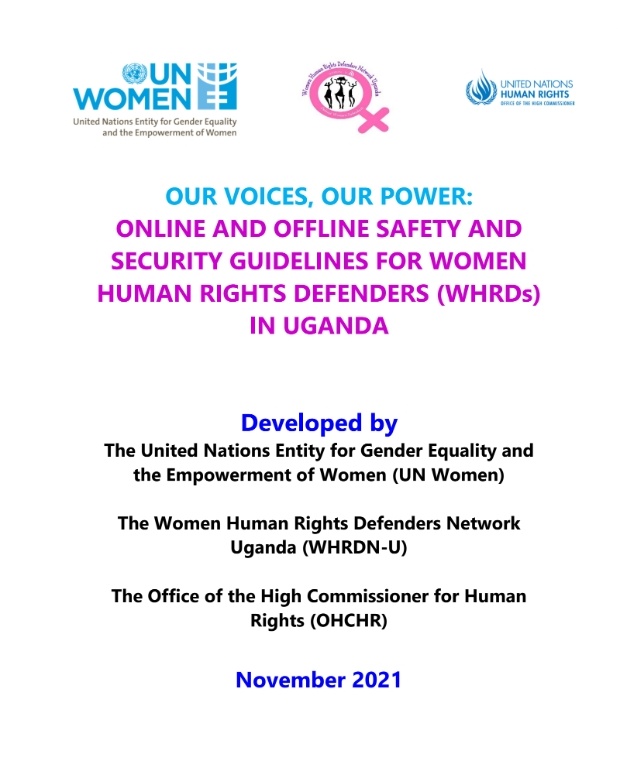On 29th November 2021, Women Human Rights Defenders Network Uganda (WHRDN-U) in partnership with the UN Women Uganda, and the Office of the High Commissioner for Human Rights (OHCHR), launched the safety and security guidelines as a strategy to strengthen the capacity of Women Human Rights Defenders (WHRDS) to mitigate the impact of gender-based violence against their work.
WHRDS and their networks continue to face specific risks and are often targets of serious abuses due to the nature of human rights work they do. They therefore require enhanced protection from attacks at all levels. Unfortunately, this is not the case in Uganda as there are no clear policies to protect WHRDS.
It is from this context that WHRDN-U together with UN Women and OHCHR developed safety and security guidelines to enhance the protection of WHRDS by providing practical safety measures.
The guidelines for WHRDS presents the best practices both online and offline, highlighted in sections 3, 4 and 5, recommendations and key considerations also highlighted in section 6. The best practices are discussed below;
- Individual WHRDS are encouraged to join the networks for solidarity, enhance their accountability and understand how to operate online, be conscious of their security all times, safeguard all evidence and report cases.
- WHRDS organizations are encouraged to develop and implement a security plan, nurture space to speak up, use collective care, wellness approach, and adopt to technology for online activism and rapid response.
- Social movements are advised to develop a database for referral of services, create support spaces at district and regional levels, and alliance building with like-minded actors.
- The guidelines also provide digital and social media mechanisms to help WHRDS and their organizations prevent online violence such as use of Anti-Virus and Anti-Spyware protection, managing social media and phone settings, blocking abusers by using social media features such as unfollowing/unfriending, reporting and muting among others.
Furthermore, the guidelines offer recommendations for the key actors in the protection of WHRDS such as;
- WHRDN-U: To establish a clear referral pathway for WHRDS, foster safe networking space for WHRDS, expand online activism, and equip WHRDS with knowledge and skills on human rights work including knowledge on ICT and put in place an emergency fund to address issues of WHRDS.
- UN Women, OHCHR and other partners: To support recommended actions to push the implementation and effective utilization of these guidelines, set up an emergency fund that addresses the unique gender attacks and violations that WHRDS face and prioritize support for self-care, wellness and healing justice for WHRDS
- WHRD Networks, organizations, and CSOs: To institute internal institutional WHRDS programs and interventions aimed at enhancing institutional safety mechanisms, safety protocols and staff capacities.
- State Actors, Non-State Actor and Communities: To enact enabling laws that curb violence targeted at WHRDS such as POMA, Computer Misuse Act, Penal Code and Sexual Offences Bill that are often used to violate WHRDS and address impunity at institutional and community levels.
To access a copy of the Safety and Security Guidelines for WHRDS click here.
